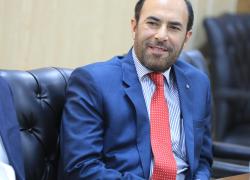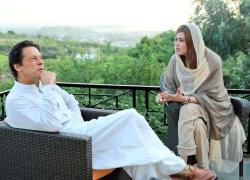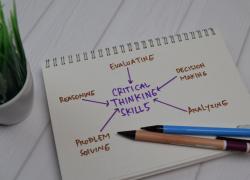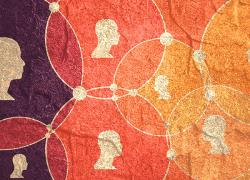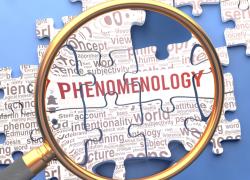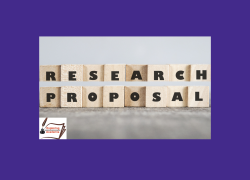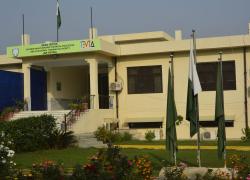The Power of Critical Thinking in Effective Problem-Solving
In the diverse and interconnected events of life, the ability to navigate complexities and find solutions stands as a witness to the power of critical thinking. It is the compass that guides us through the maze of problems, urging us to explore, question, and innovate. In this exploration, we enquire into the profound role of critical thinking in the realm of problem-solving—a dynamic interplay that goes beyond mere analysis, inviting us to cultivate a mindset of inquiry and strategic reasoning.
Critical thinking, often regarded as the engine that drives intellectual pursuits, finds its true mettle when applied to the intricacies of problem-solving. It is not merely a skill set but a holistic approach—a way of thinking that empowers individuals to accept challenges, identify root causes, and construct viable solutions.
This blog post discusses the role of critical thinking in problem-solving. From its foundational principles to real-world applications, we will traverse the landscapes of analytical reasoning, creative ideation, and the nuanced art of decision-making. Together, we will explore how critical thinking serves as the linchpin in unraveling the mysteries of complex problems and propelling us toward effective and innovative solutions.
Introduction
Critical thinking and problem-solving are closely interconnected and often work together to achieve successful outcomes. Critical thinking is essential for effective problem-solving, as they allow individuals to analyze the situation, identify the root cause of the problem, and evaluate potential solutions. Problem-solving, on the other hand, provides a framework for applying critical thinking skills in a practical and goal-oriented manner.
Essentially, critical thinking is the process of analyzing information objectively and making judgments based on evidence and reason. It involves evaluating the credibility of sources, identifying assumptions and biases, and recognizing logical fallacies. Critical thinking skills are essential for understanding complex issues, making informed decisions, and solving problems effectively. While, problem-solving is the process of identifying and resolving problems. It involves defining the problem, generating potential solutions, evaluating the effectiveness of each solution, and implementing the chosen solution. Problem-solving skills are essential for overcoming obstacles, achieving goals, and adapting to change.
So, critical thinking and problem solving are two key skills that are interrelated and are highly valued in the field of education and in the professional world. They are essential for tackling complex tasks, making important decisions, and functioning effectively in a variety of roles. These cognitive skills are highly valued in both personal and professional settings. While they are closely related and often used interchangeably, there are distinct differences between the two.
These two skills are used in conjunction and feed off each other, as effective problem solving often requires profound critical thinking skills. Critical thinking enables us to analyze and interpret the nature of the problem accurately, while problem-solving skills help us devise effective strategies to deal with the identified problem.
Role of critical thinking in effective problem-solving
Critical thinking plays a crucial role in effective problem-solving by providing a structured and analytical approach to identifying and addressing challenges. It empowers individuals to break down complex problems into smaller, more manageable components, evaluate potential solutions, and implement the most effective course of action.
- Identifying the Problem:
Critical thinking begins with clearly defining the problem at hand. This involves gathering relevant information, understanding the context, and identifying the specific issue that needs to be resolved. Critical thinkers can ask probing questions to clarify the problem’s scope, limitations, and potential impact.
- Analyzing the root causes:
Once the problem is clearly defined, critical thinking involves analyzing its underlying causes. This involves identifying the factors that have contributed to the problem’s emergence and understanding the dynamics that sustain it. Critical thinkers can use various analytical tools, such as cause-and-effect diagrams, fishbone diagrams, and root cause analysis, to delve into the problem’s origins.
- Generating creative solutions:
Critical thinking fosters creativity and innovation in generating potential solutions. This involves brainstorming a variety of ideas, considering different perspectives, and challenging conventional approaches. Critical thinkers can use techniques such as mind mapping, brainstorming sessions, and lateral thinking to expand their thinking and generate unconventional solutions.
- Evaluating solution effectiveness:
Critical thinking involves carefully evaluating the potential effectiveness of each proposed solution. This involves assessing the feasibility, practicality, and potential consequences of each option. Critical thinkers can use various evaluation criteria, such as cost-benefit analysis, risk assessment, and impact analysis, to make informed decisions.
- Implementing and monitoring the solution:
Once the most effective solution is selected, critical thinking guides the implementation process. This involves developing a plan, assigning responsibilities, and allocating resources. Critical thinkers can monitor the implementation process, assess its effectiveness, and make adjustments as needed.
- Reflecting and learning:
Critical thinking encourages reflection and learning from problem-solving experiences. This involves analyzing what went well, identifying areas for improvement, and incorporating lessons learned into future problem-solving endeavors. Critical thinkers can use reflective practices, such as journaling, feedback sessions, and after-action reviews, to continuously enhance their problem-solving skills.
In essence, critical thinking provides a systematic and analytical approach to problem-solving, enabling individuals to identify the root causes of problems, generate creative solutions, evaluate their effectiveness, and implement them effectively. Critical thinking is a valuable skill that empowers individuals to tackle challenges effectively and achieve desired outcomes.
How to develop critical thinking and problem-solving skills?
To develop these skills, individuals can engage in brainstorming sessions, group discussions, debates, puzzles, case studies, scenario building, and other similar activities. Increasing the practice of these processes helps to build mental flexibility, enhances creativity, supports decision-making skills, boosts the ability to tackle complex tasks, and helps students and professionals alike become more independent, self-reliant and effective in their chosen fields.
For example, in a professional setting, an employee might use critical thinking to evaluate the pros and cons of various solutions for a business problem—considering the potential impacts on various stakeholders and the alignment with the company’s strategic objectives—before using problem-solving skills to design and implement a project plan to execute the chosen solution efficiently and effectively.
Developing critical thinking and problem-solving skills in conjunction is essential for making sound decisions, solving complex problems, and navigating the challenges of life. These skills can be developed and improved through practice and experience. Here are some effective strategies to enhance both skills simultaneously:
- Practice active learning: Engage actively with information instead of passively reading or listening. Ask questions, challenge assumptions, and seek out diverse perspectives to deepen your understanding.
- Analyze and evaluate information critically: Don’t accept information at face value. Scrutinize the source, evidence, and reasoning behind any claim. Identify biases, evaluate logical fallacies, and consider alternative interpretations.
- Identify patterns and connections: Look for patterns and relationships between seemingly unrelated information. This helps you understand the bigger picture and draw meaningful conclusions.
- Break down complex problems: Don’t feel overwhelmed by complex problems. Break them down into smaller, more manageable components to make them less daunting.
- Generate creative solutions: Don’t limit yourself to conventional approaches. Brainstorm a variety of ideas, consider unconventional solutions, and challenge the status quo.
- Evaluate solutions critically: Assess the feasibility, practicality, and potential consequences of each proposed solution. Weigh the pros and cons carefully before making a decision.
- Reflect on your thinking: Take time to reflect on your thinking process. Identify areas for improvement and incorporate lessons learned into future endeavors.
- Engage in problem-solving activities: Regularly practice problem-solving skills by engaging in puzzles, games, or real-world challenges.
- Seek feedback and guidance: Seek feedback from others to identify areas for improvement and gain different perspectives.
- Make critical thinking a habit: Incorporate critical thinking into your daily life, applying it to everyday situations and decisions.
Conclusion
In a nutshell, critical thinking and problem-solving are two essential tools that enable individuals to approach challenges logically, understand the depth of the issue, consider a variety of solutions, and choose and implement the most effective one. However, it is important to remember that developing critical thinking and problem-solving skills takes time and effort. Consistent practice, a willingness to learn from mistakes, and a commitment to continuous improvement will lead to significant advancements in both skills. By developing strong critical thinking and problem-solving skills, individuals can enhance their ability to make informed decisions, overcome challenges, and achieve their goals. These skills are essential for success in both personal and professional endeavors.


